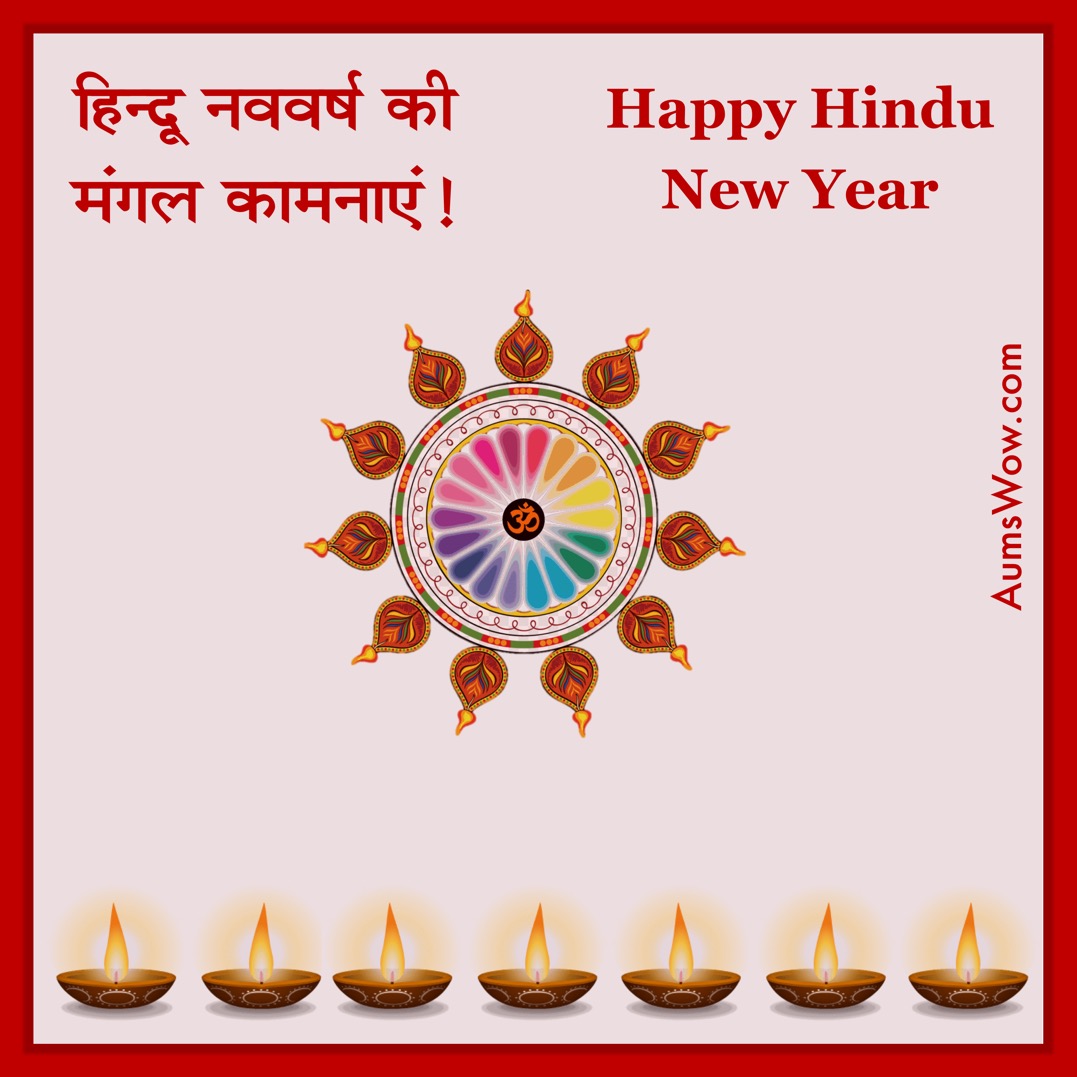6th Apr 2019: Happy Hindu New Year

About Post |
|---|
| Title : |
| Happy Hindu New Year |
| Objective : |
| To let the people know about Hindu New Year, known as different names through out different regions. |
| Colour Scheme : |
| Dark Red, as it is the auspicious colour. |
| Focus I : |
| The vibrant 'Aum' at the background. |
| Focus II : |
| The auspicious lighted lamps |
| Misc. : |
| The exact day of the Hindu New Year changes every year, in accordance with the calculations in the lunar calendar. Each state in India celebrates the New Year in its own unique way, following customs and traditions that are exclusive to that particular region. |
Significance |
|---|
| Date : |
| 6th April |
| Related to : |
| Hindu New Year |
| Connect Date : |
| Not Known, but more than 2050 years from now. |
| Connect Place : |
| Not known, somewhere in Ancient India |
| Special 1: |
| The origins of the Hindu New Year revolve around the legend of the great Hindu King, Vikramaditya, who ruled in 57 BC. It is believed that King Gardabhilla, who ruled in 12th Century CE, once seized a nun named
Saraswati. She was the sister fo the Jain monk, Kalakacharya. The monk then took the help of the ruler of Saka to conquer Gardabhilla. The former eventually defeated the latter. A defeated Gardabhilla went
to the forest, where he was killed by a tiger. His son, Vikramaditya, grew up to be a great King. He invaded Ujjain and defeated the Sakas. This new era of the King’s victory, it is said, is celebrated as
the Vikram Samvat. Gudhi Padwa or Gudi Padwa, also referred to as Samvatsar Padvo (among the Hindu Konkanis residing in Goa), is celebrated by Maharashtrians, on the day of the Chaitra Shukla Pratipada. This is also the first day of Chaitra Navratri and is known as Ghatasthapana or Kalash Sthapana. The word "Padwa" is taken from the Sanskrit word, Pratipada, the first day of the lunar month. On this day, an ornamented Gudi is hoisted and worshipped, which is what gives the festival its name. This festival is celebrated at the very end of the Rabi season. It is one of the Saade-Teen Muhurtas, or the 3 and a half auspicious days of the Hindu Lunar calendar. |
| Special 2: |
| Ugadi, Yugadi or Samvatsaradi as per the Telugu and Kannada Hindu calendar, is celebrated on the first day of the waxing phase of the moon in the month of Chaitra. This day is also called the Chitra Shukla Paksha
Padyami - this falls in March or April, as per the Gregorian Calendar. In fact, this day is considered the New Year day for Hindus living between the Vindhya-Kaveri belt. The name Ugadi or Yugadi is derived
from the Sanskrit roots of Yuga or "age"; and Adi, which means, "beginning" - combined together, this word means "the beginning of a new age". The Kannada, Marathi, Telugu and Konkani celebrate this event
with great verve. The day begins with an elaborate oil bath ritual, followed by a visit to the nearby temple. This is followed by a feast of a certain dish including all six tastes, called the Ugadi Pacchadi
in Telugu and Bevu-Bella in Kannada. This is symbolic of accepting and enjoying life in the year ahead, which is a mixture of all different tastes or experiences, including happiness, sadness, anger, fear,
disgust and surprise. Navreh is celebrated as the New Year’s Day in Kashmir. This day too coincides with the first day of Chaitra Navratras. The people residing in this part of India consider this day to be as sacred and holy as the Shivartri day. In fact, this day is even mentioned in the Nilamat Purana and the Rajtarangini of Kashmir. The people here celebrate this second Navratra (the first one is during the 9 days of the festival of Navratri, concluding with the Dusshera) in commemoration of the victory of their great King, Lalitaditya. Navreh falls on the same day as Gudhi Padwa or Ugadi. |
| More Info : |
| Swami Dayanand Saraswati founded the Arya Samaj on this day, in the year 1875. Hence, this is a big day for that community as well. |
